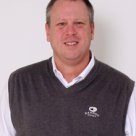Brad Fritsch remembers his first U.S. Open all too well. Fritsch, then playing on the Canadian Tour, qualified for the 2006 version of the hardest golf tournament in the world when it was held at Winged Foot in New York. Held at a notoriously difficult course, Fritsch says he was overwhelmed by the experience, from the challenges of the course to playing alongside the best golfers in the world.

He returns this week as a more mature player with a game that has been tested at the highest levels.
“This could be a big deal for me this week because I’m playing better,” said Fritsch, who hails from the Ottawa suburb of Manotick. “I’m not intimidated anymore. I’m not looking around and seeing all of the players and everything that’s going on like the last time.”
Fritsch admits he struggled with the atmosphere of his first U.S. Open, where Australian Geoff Ogilvy outlasted Phil Mickelson and Colin Montgomerie to win the tournament. Fritsch played two years on the PGA Tour, and this year is competing on the Web.com Tour. While his year started slowly, it is now rounding into shape. He qualified for the U.S. Open on a grueling 36-hole day in Columbus, Ohio last week alongside fellow Canadian David Hearn, who is a PGA Tour regular. Fritsch, who played a Web.com Tour event the day before the U.S. Open qualifying, only arrived in Ohio from Dallas near midnight, and had to leave for the course in Columbus at 5:45 am.
Regardless, Fritsch played well at the qualifier, and is now geared up for the U.S. Open. Hearn shot 7-under par for the day and is also at Chambers Bay this week.
At Chambers Bay both players will find a course unlike any other they’ve played. Located near Tacoma in Washington, the course is built on a reclaimed mine site and is akin to the links one might find in Scotland or Ireland, only on steroids. Wild greens, and wide fescue fairways dominate the site, which only has a single tree on it.
Before arriving this week, Fritsch had not seen the course firsthand. But Fritsch said he’s very comfortable with the shots required at a links course—where golfers often play the ball along the ground, or bounce it into greens. Players have complained about the more extreme elements of the golf course, but Fritsch said that shouldn’t bother him.
“I don’t mind playing the ball on the ground and I don’t mind running it up,” he says. “And I don’t hit it high or spin it a lot. And even on traditional courses, if I’m in the rough rarely do I land it on the greens—I’ll run it up. I enjoy doing that.”
It is a course that is miles apart from Winged Foot, a traditional parkland course filled with large trees, where Fritsch played his first U.S. Open nearly a decade ago. But he enters the tournament as a very different golfer.
“I’m older and I’m more experienced,” he says, laughing, “and I’m so much better than I was last time.”




Comments